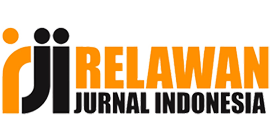Efektivitas Latihan Interval With Mini Hurdle untuk Mengurangi Tingkat Kejenuhan Atlet Middle Distance Remaja
DOI:
https://doi.org/10.31539/2x3gdx91Keywords:
latihan interval, mini hurdle, kejenuhan, atlet remaja, middle distanceAbstract
This study aims to test the effectiveness of interval training with mini hurdles in reducing the level of saturation in adolescent middle distance athletes. The research design used experiments with two groups (K1 and K2), each consisting of 15 athletes. Athletes will be given treatment in the form of an interval training program with mini hurdles for the experimental group and conventional training for the control group.The instrument used is a standardized athlete burnout questionnaire based on the Athlete Burnout Questionnaire (ABQ) which includes the dimensions of emotional fatigue, decreased achievement, and depersonalization. Measurements were taken at the pre-test and post-test stages, then analyzed using the Shapiro-Wilk test for normality and paired t-test. The results showed a significant decrease in the saturation score in both groups (K1: 45.67 ± 3.79 to 30.07 ± 3.67; Q2: 37.47 ± 1.30 to 29.53 ± 1.92; p = 0.001). The conclusion of this study confirms that interval training with mini hurdles is effective in reducing boredom while contributing to increasing motivation and well-being of adolescent athletes.
Keywords: interval training, mini hurdle, burnout, adolescent athletes, middle distance
References
Bicalho, C. C. F. y C. (2017). Burnout in Elite Athletes: a Systematic Review. Cuadernos de Psicología Del Deporte, 18(1), 89–101.
Eraslan, L., Castelein, B., Spanhove, V., Orhan, C., Duzgun, I., & Cools, A. (2021). Effect of Plyometric Training on Sport Performance in Adolescent Overhead Athletes: A Systematic Review. Sports Health, 13(1), 37–44. https://doi.org/10.1177/1941738120938007
Gustafsson, H., DeFreese, J. D., & Madigan, D. J. (2017). Athlete burnout: review and recommendations. In Current Opinion in Psychology (Vol. 16, pp. 109–113). Elsevier B.V. https://doi.org/10.1016/j.copsyc.2017.05.002
Isoard-Gautheur, S., Guillet-Descas, E., & Gustafsson, H. (2016). Athlete burnout and the risk of dropout among young elite handball players. Sport Psychologist, 30(2), 123–130. https://doi.org/10.1123/tsp.2014-0140
Kawinchotpaisan, K., Segsarnviriya, C., & Norchai, P. (2025). The Effects of High-Intensity Interval Training (HIIT) on Sleep Quality in Obese Patients: A Systematic Review and Meta-Analysis of Randomized Controlled Trials. In Obesities (Vol. 5, Issue 2). Multidisciplinary Digital Publishing Institute (MDPI). https://doi.org/10.3390/obesities5020032
Kuncoro, M. A., Nurhasan, Kartiko, D. C., Turi, M., & Kristiyandaru, A. (2025). Transforming the lifestyle of modern athletes: The impact of wearable and E-sports technologies on physical and mental health in a sustainable event ecosystem. Edelweiss Applied Science and Technology, 9(6), 751–759. https://doi.org/10.55214/25768484.v9i6.7873
Lastella, M., Roach, G. D., Halson, S. L., & Sargent, C. (2015). Sleep/wake behaviours of elite athletes from individual and team sports. European Journal of Sport Science, 15(2), 94–100. https://doi.org/10.1080/17461391.2014.932016
Lonsdale, C., & Hodge, K. (2011). Temporal ordering of motivational quality and athlete burnout in elite sport. Medicine and Science in Sports and Exercise, 43(5), 913–921. https://doi.org/10.1249/MSS.0b013e3181ff56c6
Lonsdale, C., Hodge, K., & Rose, E. (2009). Athlete burnout in elite sport: A self-determination perspective. Journal of Sports Sciences, 27(8), 785–795. https://doi.org/10.1080/02640410902929366
MacInnis, M. J., & Gibala, M. J. (2017). Physiological adaptations to interval training and the role of exercise intensity. In Journal of Physiology (Vol. 595, Issue 9, pp. 2915–2930). Blackwell Publishing Ltd. https://doi.org/10.1113/JP273196
Minikin, B. (2012). Sports management, principles and applications. European Sport Management Quarterly, 12(3), 309–312. https://doi.org/10.1080/16184742.2012.684590
Sánchez-Sánchez, L. C., Franco, C., Amutio, A., García-Silva, J., & González-Hernández, J. (2023). Influence of Mindfulness on Levels of Impulsiveness, Moods and Pre-Competition Anxiety in Athletes of Different Sports. Healthcare (Switzerland), 11(6). https://doi.org/10.3390/healthcare11060898
Turi, M., Rachman, A., Tuasikal, S., Siantoro, G., & Wahyudi, A. R. (2023). Pengaruh Latihan Interval With Mini Hurdle dan Fartlek Time To Distance Terhadap Peningkatan VO2Max. 11, 104–112. https://doi.org/10.32682/bravos.v11i2/2951
Velasco, F., & Jorda, R. (2020). Portrait of Boredom Among Athletes and Its Implications in Sports Management: A Multi-Method Approach. Frontiers in Psychology, 11. https://doi.org/10.3389/fpsyg.2020.00831
Xueqian, Z., & Jiechun, W. (2023). High-Intensity Interval Training Applied To Physical Training. Revista Brasileira de Medicina Do Esporte, 29. https://doi.org/10.1590/1517-8692202329012022_0523
Downloads
Published
Issue
Section
License
Copyright (c) 2025 Mariyam Dewi Amalia, Bhekti Lestari

This work is licensed under a Creative Commons Attribution-NonCommercial 4.0 International License.


